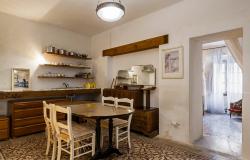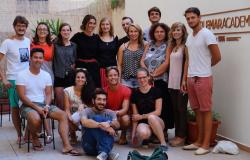On the south-eastern coast of Sicily is a string of marine villages and wild beaches suited for a serene holiday dictated by leisurely nature walks, long lunches with a sea view, naps on the beach, all in the spirit of slow travel.
It’s not the Sicily of glitzy towns like Taormina, of high-energy cities like Catania, of enchanting sea colors Favignana, and you'll have to make a bit of an effort to find the picturesque spots; but it’s closer to regular Sicily, the one where it’s easy to observe and mingle with locals out at the beach. It’s also that area of Sicily close enough to Val di Noto that you can mix it all up between lazy days at the beach and cultural visits to Unesco-inscribed late Baroque towns.
A good base to explore this part of Sicily is the fishing village of Donnalucata. Inhabited since Greek and Phoenician times, Donnalucata has a small fishing port and sandy beaches on either side of the harbor, aptly called Spiaggia di Ponente (Western Beach) and Spiaggia di Levante (Eastern Beach), the latter featuring a fresh water source which emerges with the low tide.
If you wake up early in the morning, you can go pick the fresh daily catch on offer at the seafood market set up in the village’s small port. In the evening, head to the lungomare (seafront) like the Siciliani do for a sunset stroll, then have dinner at one of the many seafood restaurants dotting the seafront.
Those looking for isolation can head outside Donnalucata to Palo Bianco, Palo Rosso and Playa Grande.
If you’re familiar with the Italian TV series Inspector Montalbano, then you may even recognize some of the locations appearing on the show as this is the area where the adventures of Italy’s most famous detective, played by actor Luca Zingaretti, take place.
Half an hour from Donnalucata is the beach of Punta Secca, the site of Montalbano’s beach house. Square-shaped stone buildings line the shore, fishing boats are docked at the harbor, long stretches of sandy beaches alternating with rocks abound, and then there’s the light, a dazzling light that is only possible at these latitudes, closer to Africa than to Rome.

[Punta Secca at sunset.]
For some light hiking by the beach, explore the Nature Reserve of Macchia Foresta del Fiume Irminio, which safeguards the habitat of the river mouth, and is characterized by a long beach enclosed by large dunes covered with Mediterranean brush. A trail flanks the ending stretch of the river.
To see the locals in action, head to Sampieri, another fishing village where former fishermen’s houses and holiday homes of the local nobility stand side by side and have been reconverted into holiday residences.
The village is positioned on a long stretch of calcareous rock sandwiched between two golden sand beaches. The larger one is flanked by a pine forest, ending at the cliff of Punta Pisciotto, on top of which is what remains of the Penna furnace, a former brick factory that exported throughout the Mediterranean and closed down in the 1920s after a fire. While it’s considered industrial archeology, It feels a bit sinister like many of the abandoned buildings you see a bit everywhere in Sicily. The furnace is another location of the Montalbano TV series, where, transformed into a tonnara (tuna-fishing factory), is a site of murders and criminal encounters.

[Sampieri.]
To the west of Sampieri is the Natural Park of Costa di Carro, a naturalistic oasis protected for its rich Mediterranean vegetation that includes agave and miniature palm trees. You may opt for a guided walk with expert local botanists. This is also a good area for snorkeling and, as you walk along the cliff, there are many spots from which you can dive into the sea. The most spectacular spot is the inlet of Spaccazza, and nearby is a beach where at times the rare Caretta caretta turtle, a protected species, goes to lay its eggs.
To the east of Donnalucata, the seemingly unattractive seaside town of Pozzallo features four beaches boasting the Blue Flag award by the FEE (Foundation for Environmental Education), which is given to beaches which meet strict criteria concerning water quality, environmental education and management, safety and other services (Sicily only has eight Blue Flag beaches overall).
The Pozzallo seafront is dotted with palm trees, while the coast is dominated by the Cabrera tower, built in the 15th century as a noble residence by a local count and later used to catch sight pirates. The current urban layout developed around the tower starting in the 19th century.
Don’t limit yourself to the rather ordinary town beach, unless you want to take advantage of organized entertainment in the form of sports and musical activities, but definitely explore the 10 km of coastline where the sand is thin and the waters shallow, ideal for tranquil dips into the sea.
This isn’t the Sicily that will make you go 'wow' all the time, but it speaks authenticity and, when the wow moments do come, often unexpected, they will make a lasting impression.

++++++++++++++++++++++++++++++++
Where to Eat:

You'll have one of those wow moments at Agriturismo Colle del Sole, set in the countryside amid olive and carob trees. This is the place to taste Sicilian specialties from inland, like ricotta ravioli in a tomato pig sauce (it won’t be a light meal).
Il Consiglio di Sicilia, Donnalucata, for fresh seafood and ‘zero-kilometer’ products.
Ammare, on the beach in Sampieri for contemporary seafood cuisine.
Cianciuolo just outside Pozzallo for fresh seafood. And when I say fresh, I mean that the spread of daily catch is right there in front of you to observe if you so wish.
How to:
Public transportation is non-existent. You will need a car to explore this remote corner of Sicily, just don’t panic when the gps takes you to a dead-end street or when the roads get winding, and an overhanging cliff is what separates you from the ravine below.












